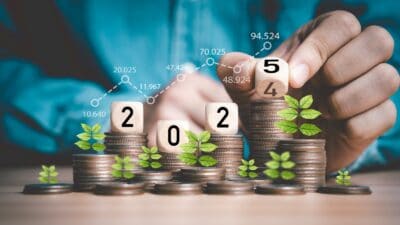For income seekers, a business paying a juicy yield is obviously a good thing. So a business paying an even juicier yield has to be an even better thing, right?
Not so fast.
Because while that first company may well be a genuine high-yielding business of the sort that income seekers love to stuff in their portfolios, the second could turn out to be a yield trap.
And yield traps are businesses that you most definitely don’t want in your portfolio — whatever your investing style.
Why? Because not only do yield traps offer dismal income prospects, but their share prices have a nasty habit of heading south alongside their dividend payouts.
Gotcha!
Now, yield traps don’t announce themselves as such.
Online data resources don’t have a column headed ‘Yield trap’, with a tick against appropriate names. Companies themselves, ever bullish, never utter the words.
And more to the point, you can only know for sure that a business is a yield trap, after the event.
Prior to that, it’s a just a potential yield trap — a share with a mouth-watering yield that lures the greedy towards it, until — too late! — investors find themselves nursing a hefty capital loss and an income that is only a shadow of what they had expected.
Now you see it, now you don’t
So what exactly is a yield trap? And how do income investors spot the warning signs?
Let’s take the two questions separately.
At its simplest, a yield trap is a share that offers an investor a yield that is too high to be sustainable.
So in general, shares offering yields of 7%, 8%, 9% or more are definitely in potential yield trap territory. 5%? 6%? That’s when spotting a yield trap starts to get difficult.
Because if the market thought that those implied yields were genuinely sustainable, then it would simply bid the share price back up to the point where the yield came closer to the market average of 3.5% or so.
Should you invest £1,000 in Greencore Group Plc right now?
When investing expert Mark Rogers has a stock tip, it can pay to listen. After all, the flagship Motley Fool Share Advisor newsletter he has run for nearly a decade has provided thousands of paying members with top stock recommendations from the UK and US markets. And right now, Mark thinks there are 6 standout stocks that investors should consider buying. Want to see if Greencore Group Plc made the list?
In short, a very high yield is often a warning flag that the market has serious doubts that the yield is sustainable — the first warning sign of a yield trap. Put another way, the 7% or so that’s seemingly on offer when you buy the shares may turn out to be illusory.
Greedy, when others are fearful
An example will help. Let’s take Company A, which offers a forecast dividend of 35 pence on a share price of £10 — in other words, that market-average yield of 3½%.
35 pence
======== = 3½% yield
1000 pence
Now, let’s suppose that the City starts to doubt that this 35 pence dividend is sustainable, and that the company might be forced to cut it, due to declining profits. A profit warning may even have been issued.
Why in particular might profits decline? Ask any of today’s mining companies, as demand from China slows down. Or oil companies, as the price of oil crashes. Or supermarket retailers, as squeezed shoppers desert to cheaper outlets.
Enough: you get the picture. Either way, the share price starts to slip, down towards £5, and the forecast yield inexorably rises.
Put another way, what you end up with looks something like this:
35 pence
======== = 7% yield
500 pence
7% yield! It’s a bargain — and so it is, right up until the moment when the board of directors bows to the inevitable, announces a dividend cut, and the share price sinks even lower. Gotcha!
Be brave, not greedy
Now let’s take a different situation. Company B again offers a market-average yield of 3½%, based on a dividend of 35 pence and a share price of £10.
35 pence
======== = 3½% yield
1000 pence
That said, its sector is in trouble — trouble which shouldn’t affect our well-managed Company B, but which admittedly might do. Plus, there are stock market worries over the euro crisis, or the economy, or international conflict, or some over macro-type situation.
In short, while there’s no particular reason to suspect that Company B’s profits — and therefore dividends — will be affected, its share price is dragged down along with the rest of the market or sector, eventually touch £5.
So pretty soon, what you’re looking at is:
35 pence
======== = 7% yield
500 pence
7% yield! It’s a bargain — and in a few months, as the market recovers and the share price regains its former level, you’re still banking that tasty 35 pence dividend, while also eyeing up a 100% capital gain.
The yield has slid back to 3.5%, of course — but only for new investors, not those who locked in 7% by being brave.
Rule of thumb
So there we have it: two tasty yields, but one of them a yield trap, the other not.
How to tell the difference in real life?
It is difficult. My advice: the more company-specific the news that hits a company’s share price, the more likely a yield trap is.
So repeated profit warnings or banana skins, for instance, are more likely to signal ‘yield trap’ rather than ‘bargain’. On the other hand, watch out for sector-based or cyclical trends that aren’t necessarily company specific, but will could well affect earnings.
It can be a tough call — and personally, I always looks twice at a yield that is more than around one and half times the market average.






